While the past year has been accompanied by a sense of dormancy and solitude, a group of creatives from Cornwall collaborated to create this fashion story – an interdisciplinary project, marrying the natural beauty found on their rural doorstep with craftsmanship and a new paradigm for consumer culture. Ali, James and Sarah give us an insight into how working, living and collaborating in a rural setting during the pandemic can spark wholesome perspectives and radical shifts in perception.
Words by Sophia Schwan, photography by James Bannister
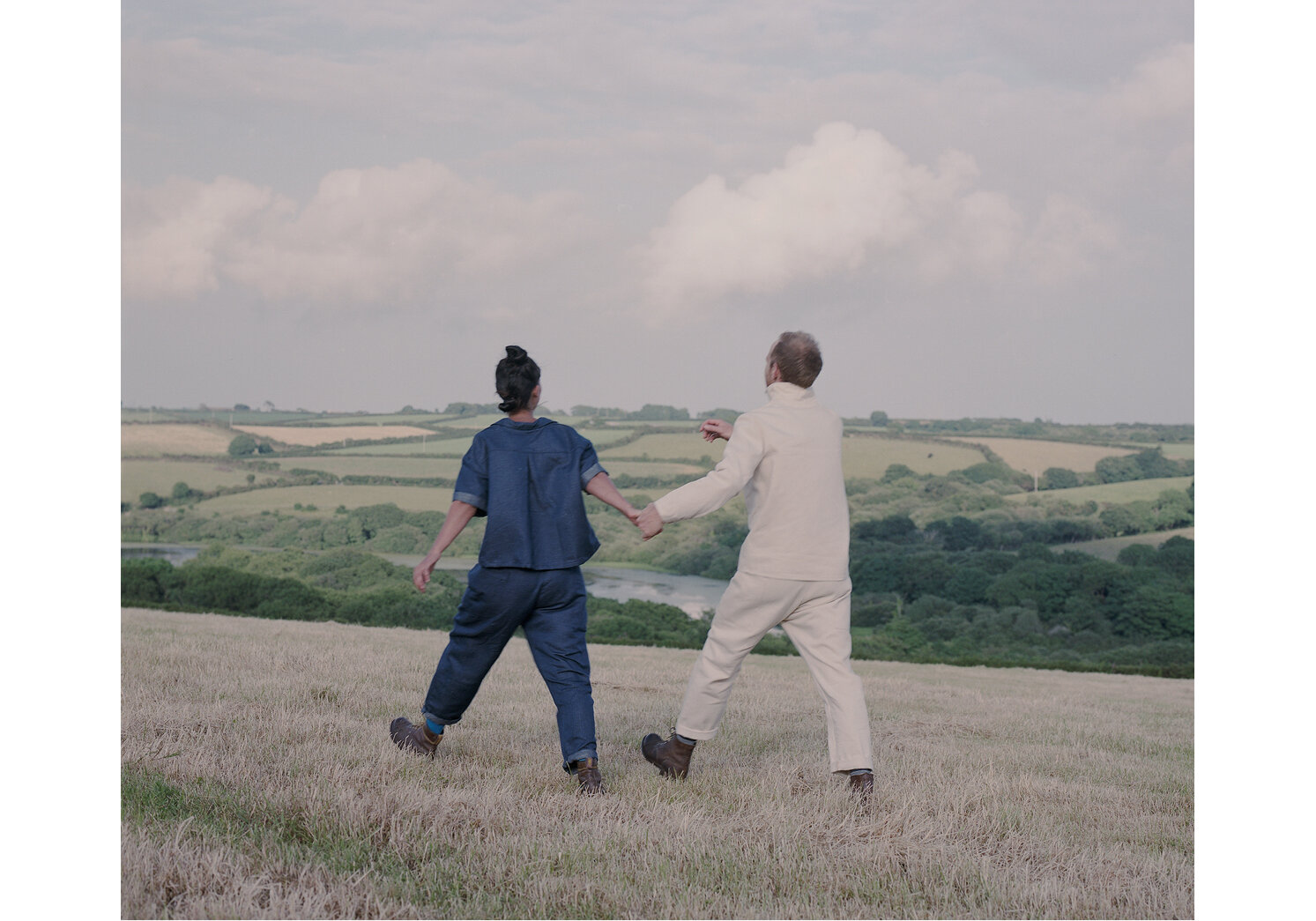
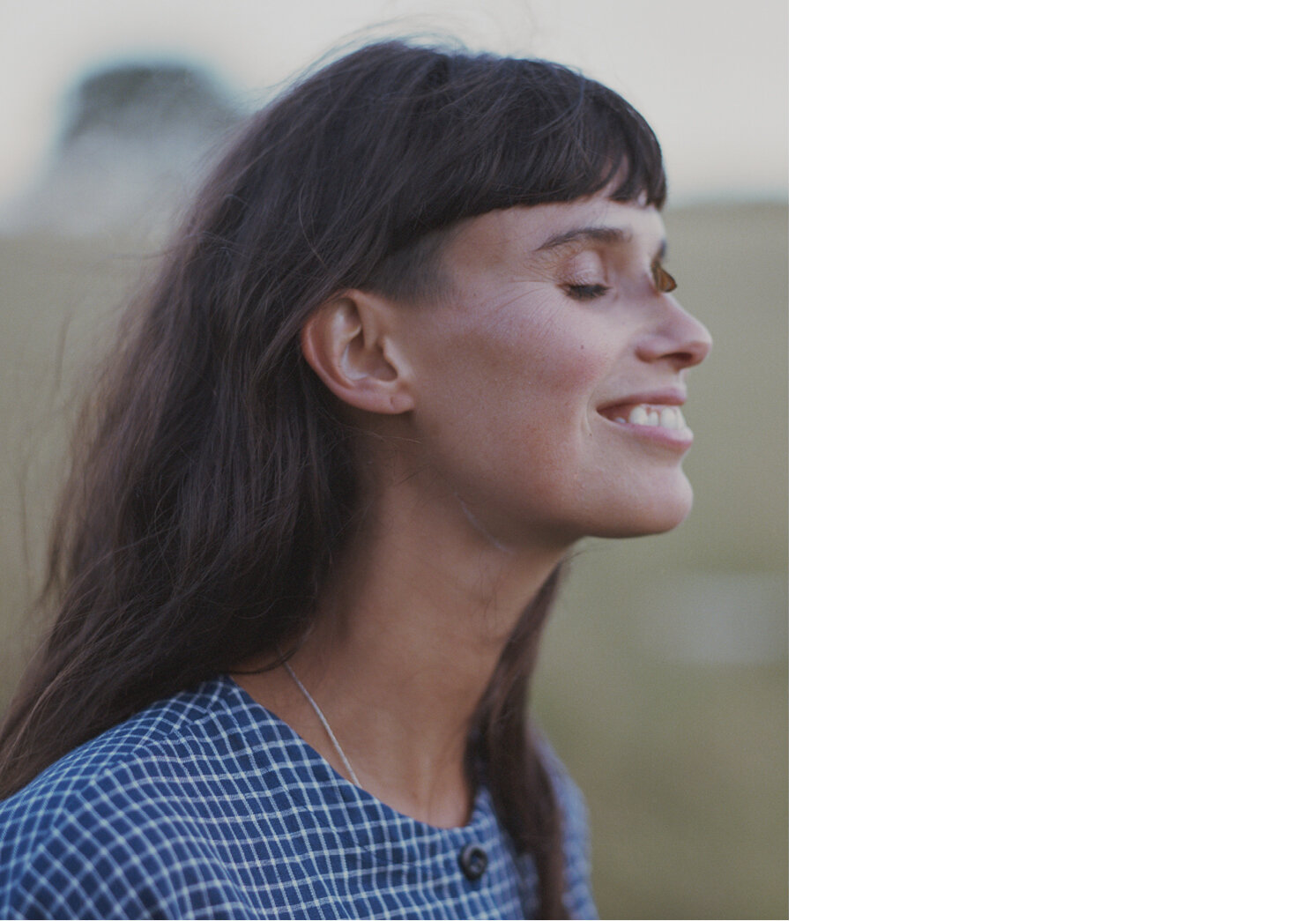
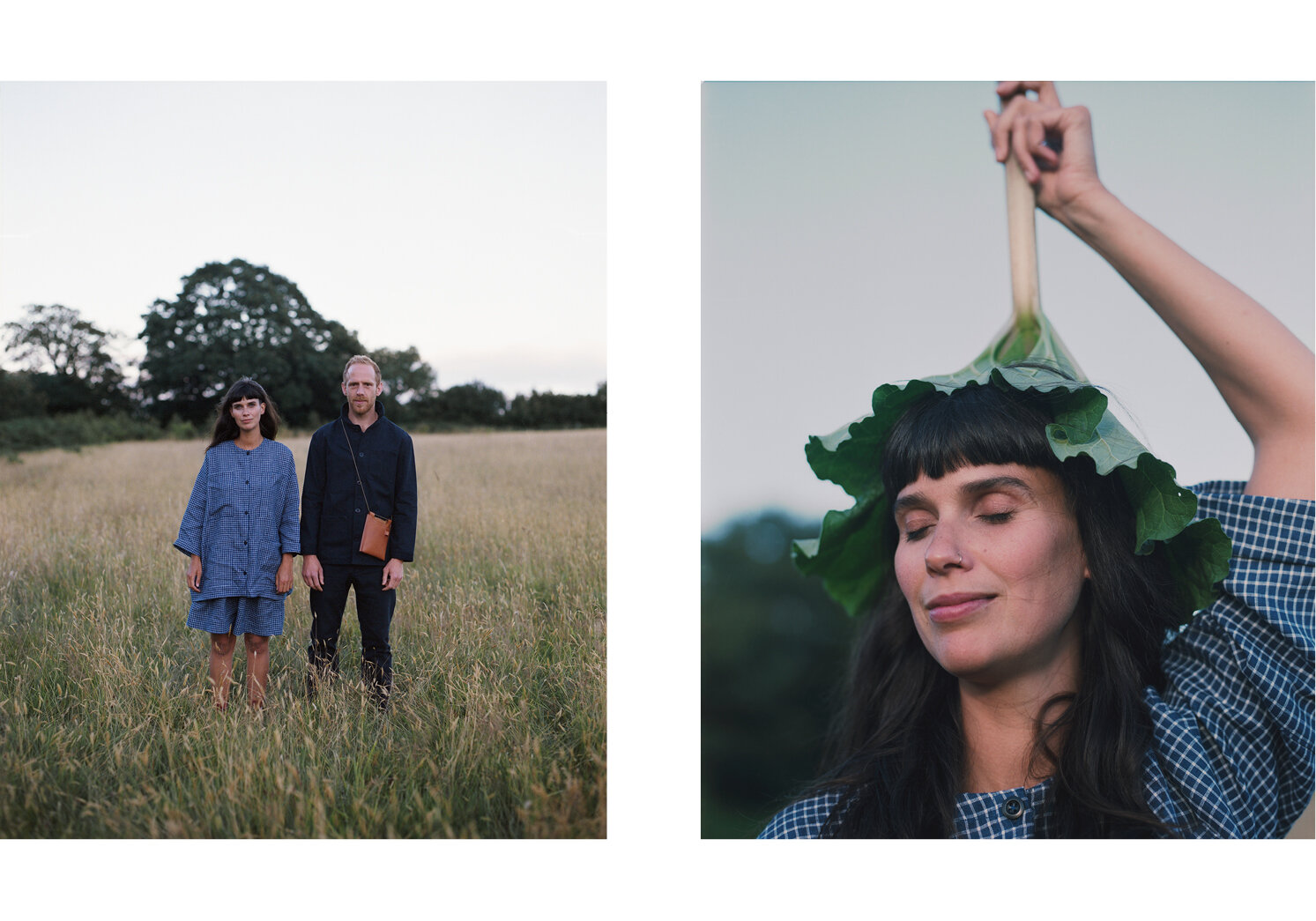
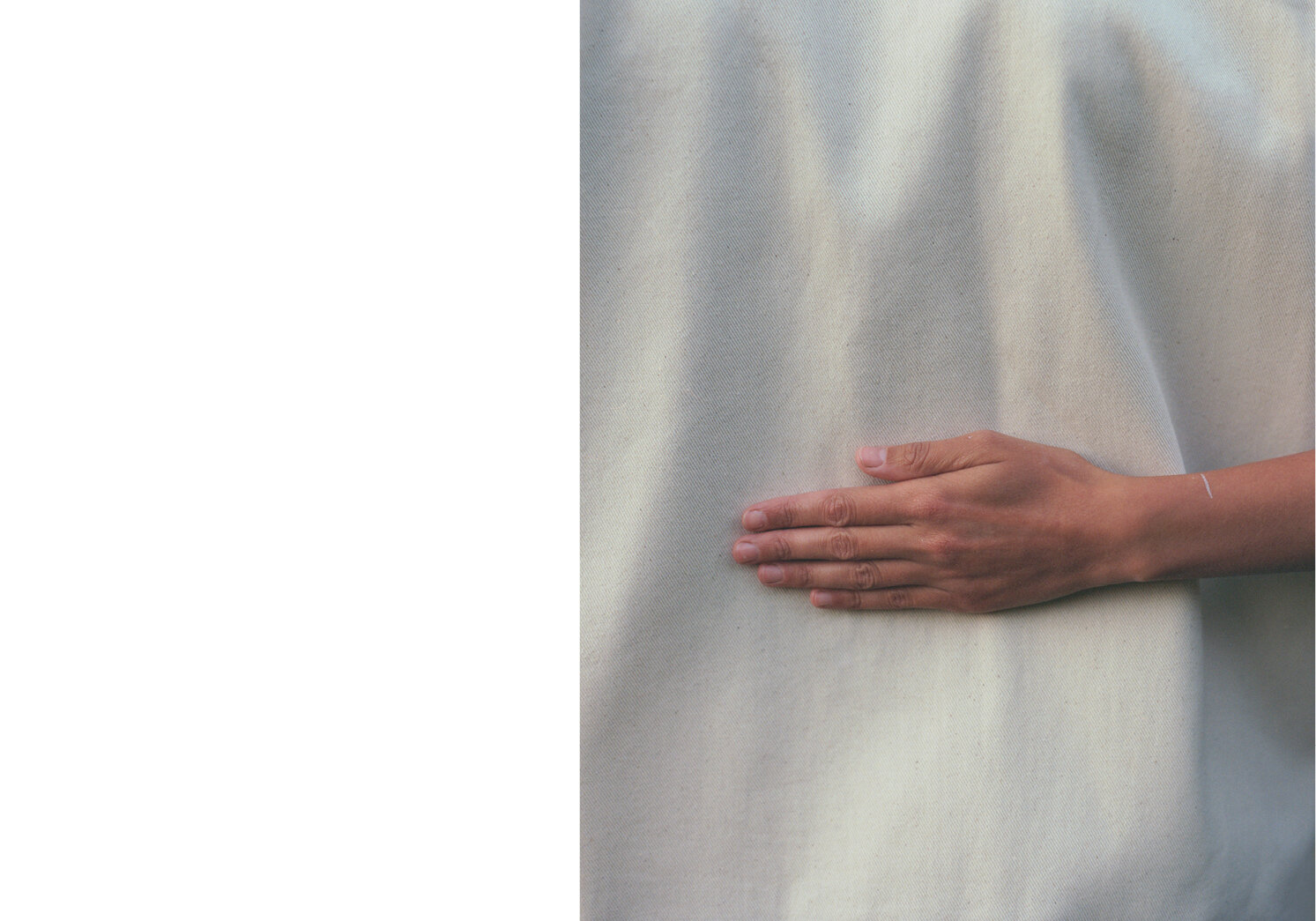
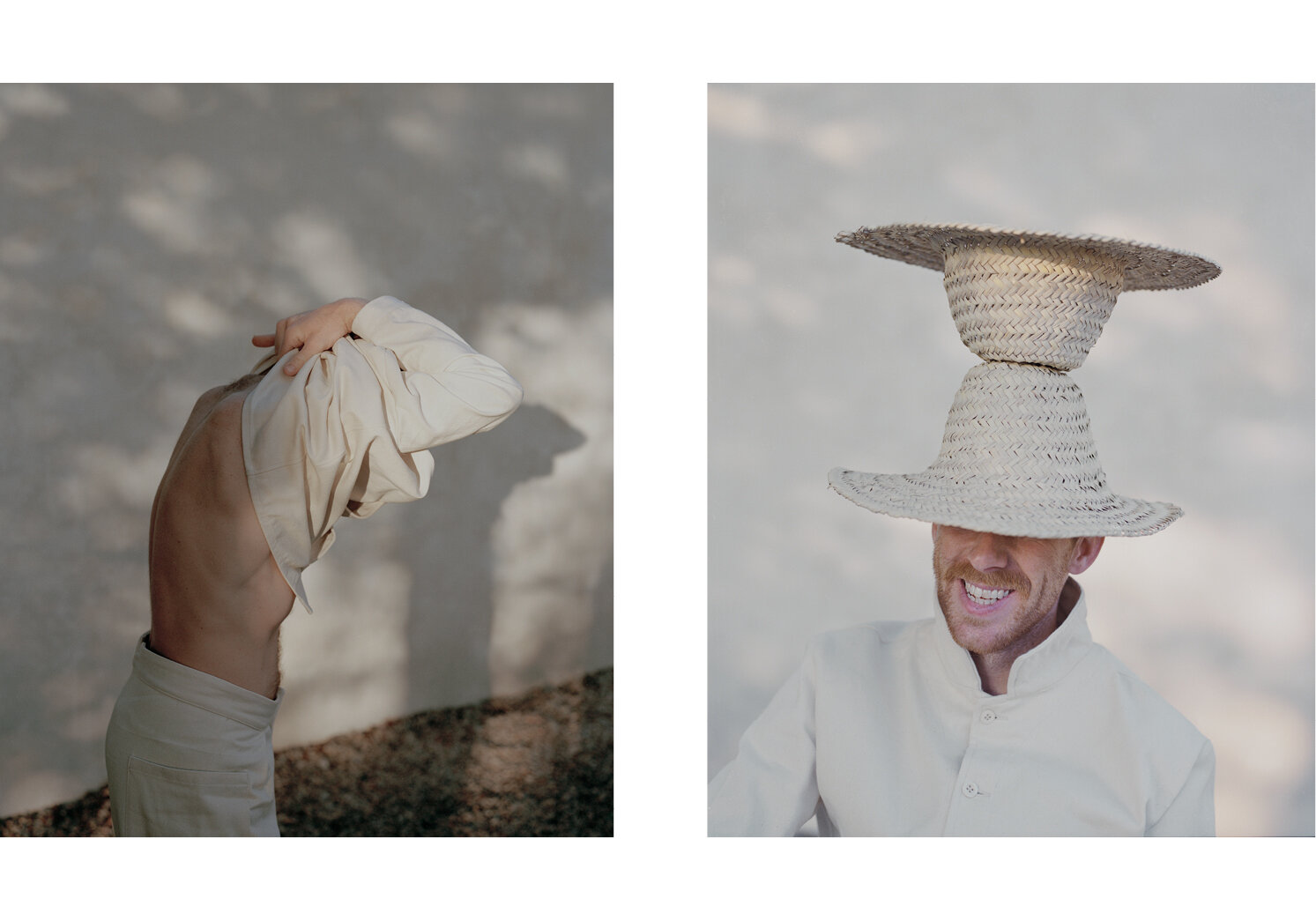
Sophia: You mentioned that you, Ali (Francli Craftwear), and James Bannister have your studios at a farm in Cornwall, which also serves as your collaboration location. Could you tell me more about this space, and your life and work in the countryside? Also, how did you three initially find each other?
Ali: Argal Home Farm is a rural homestead and workspace collective just outside Falmouth. Set up in 2016 by James Smith, a designer, and carpenter, the land, buildings, and people have evolved together over the years to become a hub of makers and creators centred on community, quality, and sustainability.
The land is being cultivated with regenerative farming principles that started with thousands of trees and wildflowers, followed by a vegetable garden, fruit cage, and orchard. Most recently, the farm is rearing livestock and is now looking forward to agroforestry aspirations. Bio-diversity focuses on the wildlife and produce and a concept for the various workspaces – a vibrant mix of different disciplines, practices and business models. Permanent residents include coffee roasters, bespoke laser cutters, designers, and fair-trade merchants.
Sarah: The Francli workshop is based in the converted cattle barn, and when lockdown hit, Ali and her partner James Bannister moved into the yoga studio so they could continue to work. I work in the kitchen garden one day a week to keep me grounded from my clothing brand. We grow all sorts of vegetables that we offer as veg boxes in the summer or simply go into James’ kitchen for tasty dinners. Our female model Meredith Owen, an artist and painter, gardens alongside me, and Tom, our male model, who previously worked in set design, lives at Argal full time.
We found ourselves together, all friends, all with small businesses, and in a work bubble. Fuelled by lots of energy and a drive to be creative in this natural pause of life, we turned inwards and saw the value already surrounding us and the similarities in each other’s work. Conversations started as to how we could work together. It felt natural and authentic, and consequently, the ideas just flowed.
Sophia: Have you always worked in a rural area? What advantages does it have, do you think?
James: Being away from traditional industry and infrastructure fosters a radical DIY attitude that maintains a purity and authenticity in our creative work, one that stands on the global stage. The many creatives working here, away from the limelight, are now starting to come to the forefront through the standard of their work. Not that this matters most – it’s about the work – but it speaks to the standard of what’s being created here.
It’s not a compromise to be out here. On the contrary, it can be an asset if you have the right mindset. I think it’s important to note that there are also real socio-economic problems in the Cornish community that shouldn’t be taken lightly.
Sarah: I run my brand from Helston, Cornwall. I believe in developing design and industry in Cornwall and giving back to a community and county that helped me develop my design ideas to begin with. As James mentioned, there is a vast disparity of wealth in Cornwall. Yet, there are also many small businesses, a lot of incredible work done at a local level, and a community feel that I haven’t experienced anywhere else.
On a personal note, I find living rurally and by the sea gives me a grounding to my practice. I want my work to be considered and slow but rich in the process, and you find all of that in nature, which is continually changing and evolving. Having the space to develop at my own pace, in my own way, is invaluable too.
Fashion, as well as being fast-paced, is (one of) the biggest industry polluters after oil. I feel that one of the problems in big businesses is that everything becomes compartmentalised. No one has responsibility for a garment, and we see so much damage done to churn out mass-produced pieces at a low cost with low value. I am responding to this by working slower, being more connected to more of the processes, and giving more importance to each piece, so it stands the test of time. My gardening job at the farm never fails to put things into perspective. When you work directly on the land, you feel a desire to work with it, respect the lessons it has for you, and think consciously about how your life and work affect the land.
Ali: Life in the countryside – lots of green space, big skies, quick to the sea, close communities. The world quickly speeds me up, so I think I need my immediate surroundings to be spacious and slow. I also love to experience seasonal changes intimately. The sea is a particular necessity. Surfing and swimming, or even just looking at it. The size and movement help put things into perspective. Plus nothing like a cold shock in saltwater to make you feel alive! Regarding my work, it was born in and for a rural setting and is very much shaped by it. One of the foremost reasons for Francli was to find a way to live and work in the countryside, by the sea. The function and aesthetic of the designs come from the landscapes of Cornwall. The topography always impacts the choices of materials, how they’re made, and how they’re meant to be used.
Although we all studied at Falmouth University, it’s not where we met, but we’ve come together in different ways through the Falmouth creative web – like-minded people and mutual friends.
James: Where we are while doing what we are trying to do is a rejection of the traditional way of doing things. We are very ambitious with our work but are finding new ways to do it that may not fit in the standard scope. There are loads of opportunities in this, such as righting long-established wrongs for example; I know Ali and Sarah are both working in their own small ways but are simultaneously changing an approach to one of the most toxic and damaging industries on the planet – fashion. Making things is simultaneously constructive and destructive; how do you minimise the impact of that?
For me, I want to create work that is as real and authentic to me as possible. In fashion, that means a marriage of documentary and editorial style, although I’ve found the best avenue for this is through photo books. I found the best work is done when I’m influenced by outside factors as little as possible, locking into an idea and following it to the end, with less outside noise. It is a personal challenge, but the surrounding environment definitely helps that.
Sophia: Sarah, you only release one handmade design per month that you produce in-house in a very limited edition. How would you describe your design philosophy? What matters to you in your work?
Sarah: I struggled to produce a collection twice a year, so much work for one person, and I was always unsure how much to make. I was trying to compete with the fashion industry and an amazing man, Toby Clark, pointed out that big fashion businesses are swimming out to sea and are going to drown. If you’re wise, you want to be heading in the opposite direction, to land. I woke up at that point, and I realised that I had to make what I do work for me, that the way I made clothes in-house and to bespoke measurements was so valuable. I was lucky in hindsight that the pandemic hit as it gave me time to process this change. I was always passionate about a no-waste philosophy and an ethical approach to fabric and dye, so it all seemed to fit together into a better way of working. Now I produce a limited amount of one design per month, the pieces being available to pre-order. My designs aim to be timeless, worn by anyone, any age, any size, with you for life.
I believe that we have a connection to our belongings that nurtures us. I believe in creating things that the owners will cherish, that they will look after, mend and repair. This is my way of helping in a society that over-consumes. I want people to think about what they are buying, understand that buying organic is important, question who is making your things and how. What is the energy of that garment? In my studio, processes are not simplified because of cost. Instead, garments are made as best as they can be. Each garment takes around four weeks from ordering, and I send an email about the process half-way through. I cannot and do not want to compete with better, faster, quicker, as I don’t think that creates genuine and enduring products. Instead, I am lucky that I can focus on slow, honest, and well-made garments that my customers respond to and understand. The exchange is not just monetary. There is a certain trust there and natural energy in the clothing.
Sophia: Rethinking our positions in our communities and our interconnectedness in these solitary times is more crucial than ever. New opportunities have crystallised, and you seem to have harnessed this beautifully. How do you think small independent businesses can adapt to the changes brought on by the pandemic and use them in a positive and inspirational way? How has your approach to your work changed as individuals and collectively in the past year?
James: We are uniquely resilient to change due to that DIY attitude; we were already self-sufficient by being outside the traditional framework of our respective industries, so we are less affected by large industry shifts. Of course, the isn’t to say we are immune, but I think the attitude of self-reliance goes along way. It’s a kind of no one else will do it for you, so you’re going to have to do it yourself attitude. Nothing is given here – you have to work for it and earn it yourself – maybe that mindset leaves one uniquely disposed to deal with change, and I think that the strengths of this have been solidified this year.
Sarah: I also felt that there was a massive shift in consumer culture. People are so keen to support their local businesses, and after an era of mass production, it feels as though people want to know that the products/works are authentic. I also felt a shift in society’s understanding that not everything needs to be perfect or delivered right on time, a human perspective coming into a previously highly polished industry.
My main personal takeaway from this period will be the change of pace; that when we can give in to it, it can create new ideas and energy. It can change the community and connection around us if we pay attention to it, and the power of being outside and immersed in nature.
Sophia: Translated into words, what tale have you spun with these images?
James: I like to create a narrative to follow when shooting editorial. In this case, it was nonlinear – we took the lead with the surrounding farm and Sarah’s work, created from plant matter, and jumped off from there. Ali’s work is tied to utilitarianism, nothing unnecessary, which is the aesthetic school that I draw from most. I love the Dieter Rams quote “less but better”.
Sarah: As we discussed the shoot, we ambled through the fields surrounding the farm. We wanted to imbue the images with a sense of what we were experiencing at the time. Suddenly there was nothing to do. There was only the outside and the few relationships we had close. It was a moment to stop and appreciate nature, a moment to listen, a moment to play in the fields with only what we had – focussing on connection to the moment, appreciation of the slow and warming light. The images then seemed to flow and lead themselves.
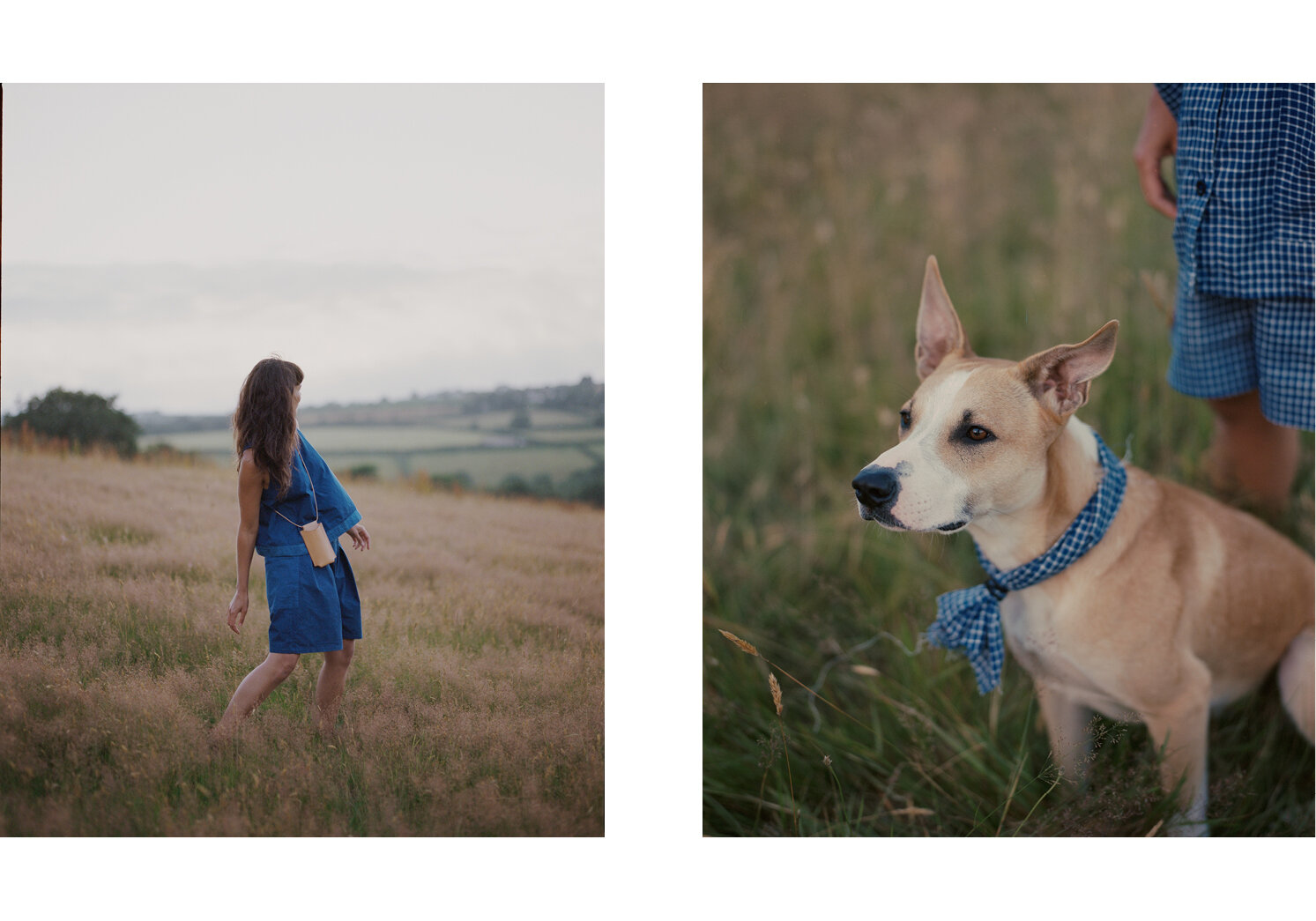
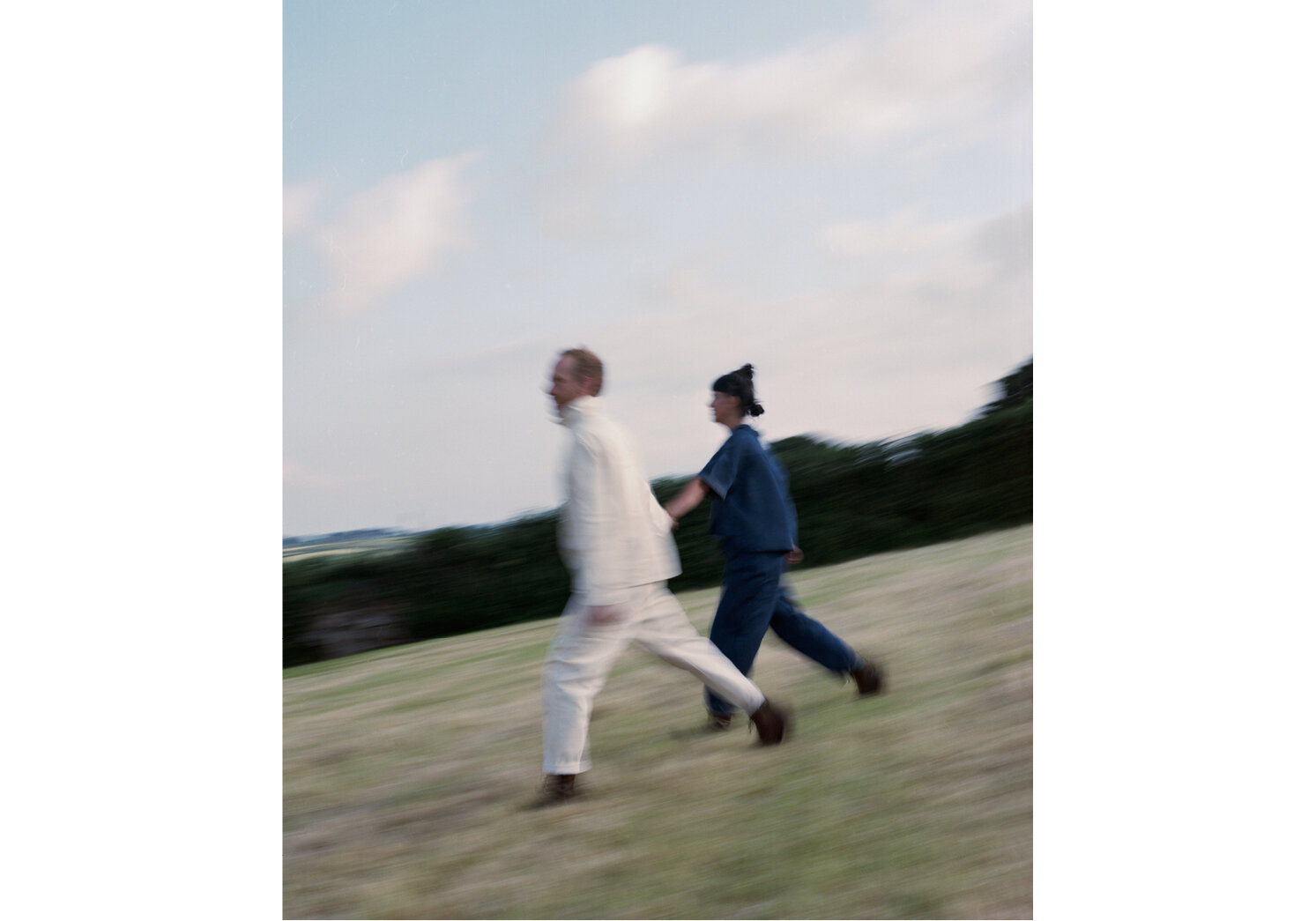
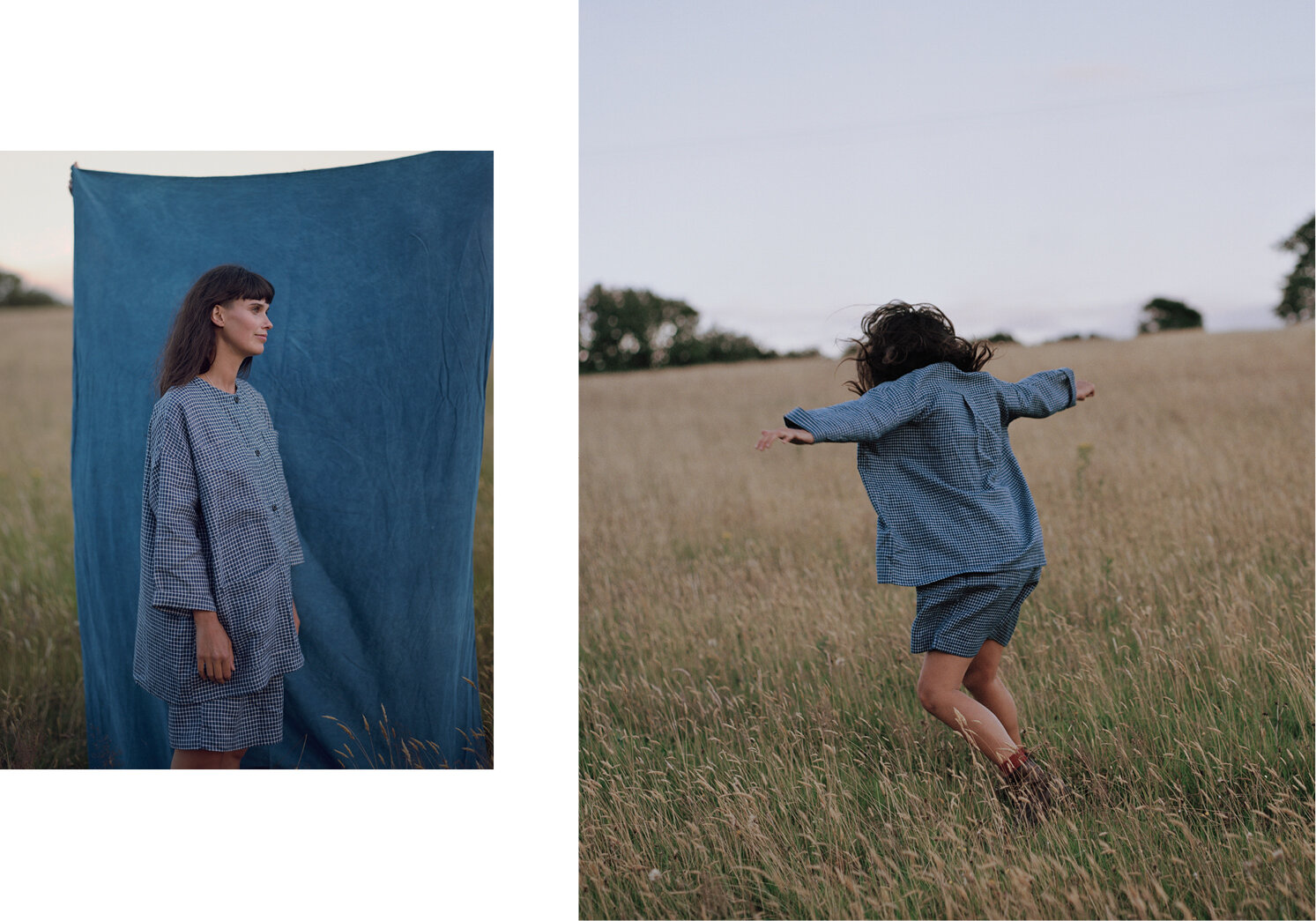
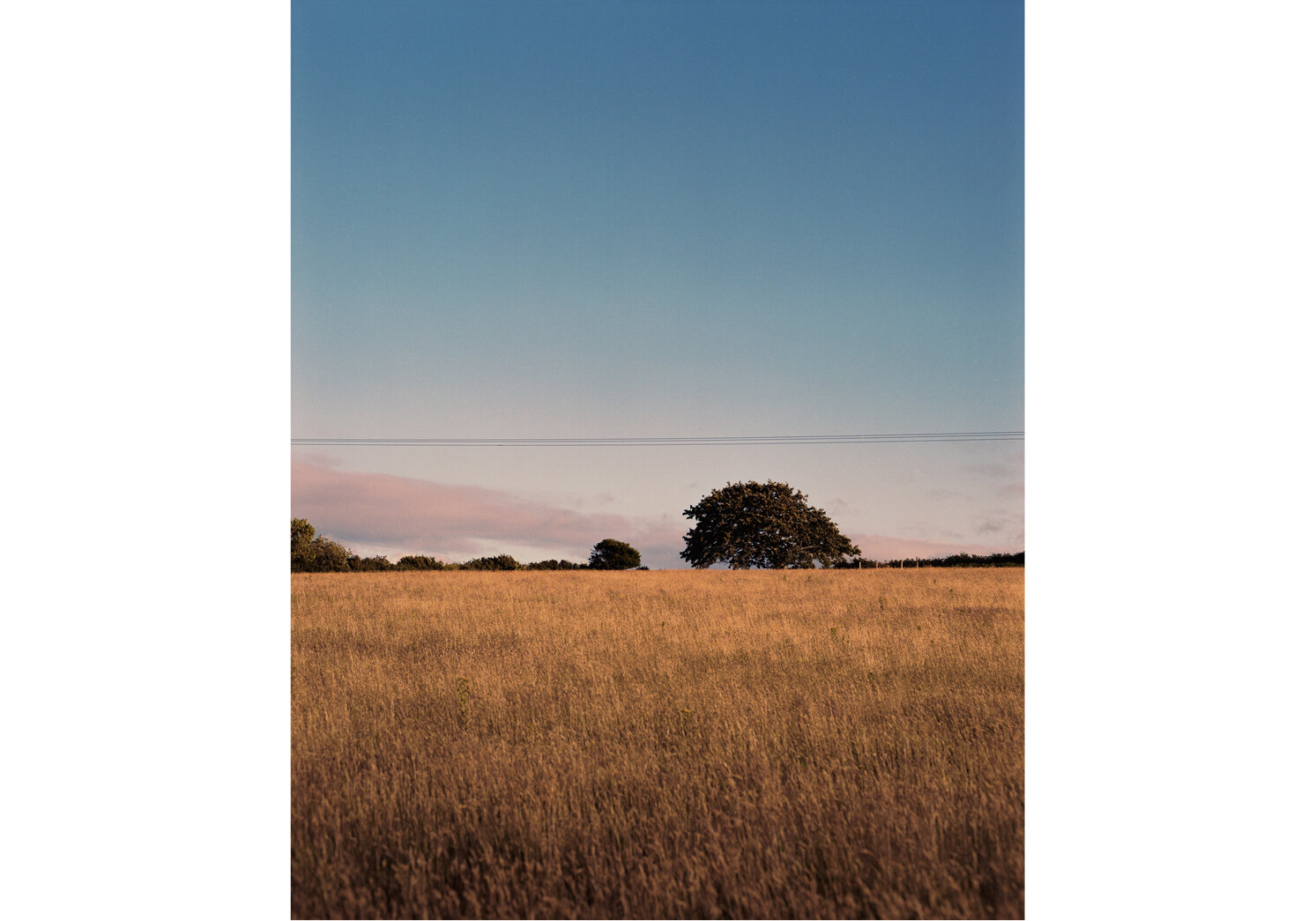
Businesses working from and connected to Argal Home Farm:
